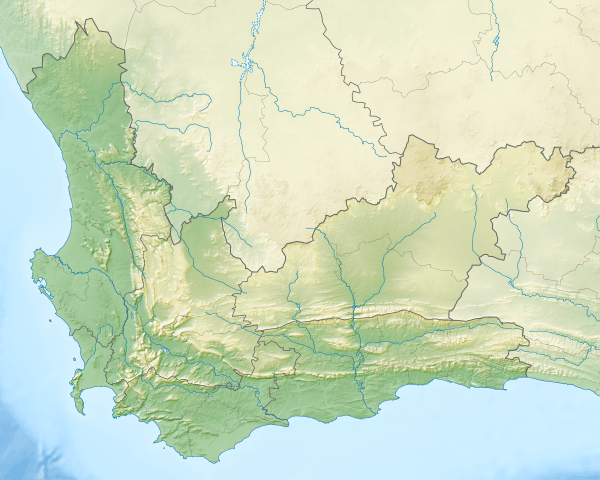Assegaaibosch Nature Reserve
| Assegaaibosch Nature Reserve | |
|---|---|
|
The trout hatchery in Assegaaibosch | |
 | |
| Location | Western Cape, South Africa |
| Nearest city | Stellenbosch |
| Coordinates | 33°58′0″S 18°55′30″E / 33.96667°S 18.92500°ECoordinates: 33°58′0″S 18°55′30″E / 33.96667°S 18.92500°E |
| Area | 204 ha (500 acres) |
| Governing body | CapeNature |
| http://www.capenature.co.za/reserves/assegaaibosch-nature-reserve/ | |
Assegaaibosch Nature Reserve is a CapeNature nature reserve situated in the Jonkershoek Valley near Stellenbosch in the Western Cape province of South Africa. It is located on the Eerste River ("first river"), with the Stellenbosch Mountain in the background. The reserve is about 9 kilometres from Stellenbosch, and 204 hectares in size. The reserve lies next to the Eerste River, which forms the northern boundary and extends up the north-eastern slope of Stellenbosch Mountain, which forms the southern boundary.
History
The Jonkershoek Valley was occupied by white settlers when Simon van der Stel granted a number of freeholds in 1692. The Assegaaibosch homestead was built around 1790. Over the years, the farm changed hands a number of times. The huge old oak trees were planted by Wouter Eduard Wium, who was granted the land by Lord Charles Somerset in 1817, with the special provision that he plant oaks in the area. In 1893, the land next to Assegaaibosch was used to establish a trout hatchery.
By the early twentieth century, Assegaaibosch had become quite run down. In 1960, the Cape Provincial Administration purchased Assegaaibosch, and the house was renovated. It is now a national monument and is used as a guest house.
The sturdy stone trout-hatching house also still stands today, although trout is no longer bred here, as it is an exotic species. CapeNature[1][2] uses the property as a conservation station. The original hatching house is a national monument.
